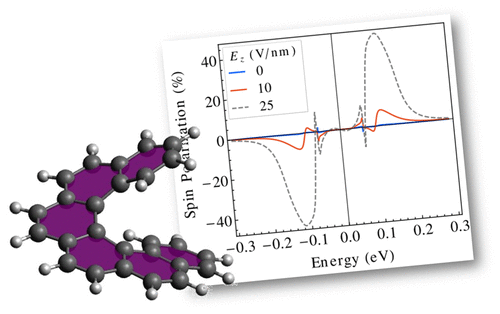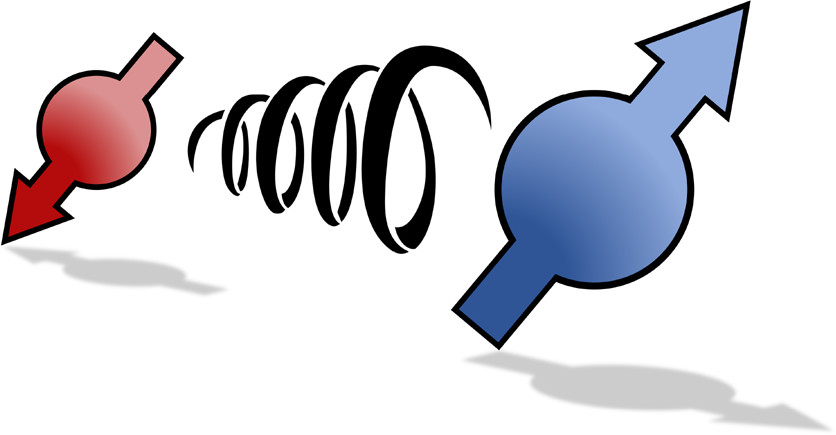

| Funding period: | Jan. 1, 2023 to Dec. 31, 2023 |
| Agency: | transCampus |
| Further details: | https://transcampus.eu/projects/ |
| Part of the following collaborative project: | transCampus partnership, King's College London and Technische Universität Dresden |
We acknowledge funding by the transCampus project "Interplay between vibrations and spin polarization in the CISS effect of helical molecules" (transcampus-ciss-2023)

Since the first experimental demonstrations of the Chirality Induced Spin Selectivity (CISS), CISS has gained much interest in various scientific fields recognizing the broad impact it bears in areas such as nanoscale charge transport, spintronics, (bio)chemical reactions and (bio)chemical recognition. In brief, when an electron circulates along a chiral molecular backbone, the particular helicoidal potential imposed by the chiral structure enhances the scattering of one of the electron spins over the other, resulting in the generation of a spin-polarized current. The experimental observations point at various factors playing an important role in controlling the CISS effect such as the molecular length, the temperature, and the direction of the intrinsic molecular dipole moment, to mention the most relevant ones. In a previously funded transCampus Joint Research Award, we addressed the influence of the intrinsic electrical dipole moment on the resulting spin polarization in helical peptides. The current proposal aims at extending the experimental and theoretical investigations (now strengthened through the participation of Prof. L. Kantorovich from KCL) to address the influence of temperature and of molecular length on the CISS effect. This will give us further insight for rationalizing the mechanisms of spin selectivity in chiral molecules, and it will open the possibility to elaborate methodologies for designing hybrid electrode/molecule interfaces using chiral molecular systems for room-temperature spintronics applications. The concepts learnt here will further help understanding the role of homochiral motifs recurrently exploited in biological systems in topics such as local magnetic fields affecting enzymatic reactivity and/or the possible role of spin-polarized currents in the long-range electron transfer/transport in biology.


| Funding period: | Jan. 1, 2023 to Dec. 31, 2023 |
| Agency: | transCampus |
| Further details: | https://transcampus.eu/projects/ |
| Part of the following collaborative project: | transCampus partnership, King's College London and Technische Universität Dresden |
We acknowledge funding by the transCampus project "Interplay between vibrations and spin polarization in the CISS effect of helical molecules" (transcampus-ciss-2023)

Since the first experimental demonstrations of the Chirality Induced Spin Selectivity (CISS), CISS has gained much interest in various scientific fields recognizing the broad impact it bears in areas such as nanoscale charge transport, spintronics, (bio)chemical reactions and (bio)chemical recognition. In brief, when an electron circulates along a chiral molecular backbone, the particular helicoidal potential imposed by the chiral structure enhances the scattering of one of the electron spins over the other, resulting in the generation of a spin-polarized current. The experimental observations point at various factors playing an important role in controlling the CISS effect such as the molecular length, the temperature, and the direction of the intrinsic molecular dipole moment, to mention the most relevant ones. In a previously funded transCampus Joint Research Award, we addressed the influence of the intrinsic electrical dipole moment on the resulting spin polarization in helical peptides. The current proposal aims at extending the experimental and theoretical investigations (now strengthened through the participation of Prof. L. Kantorovich from KCL) to address the influence of temperature and of molecular length on the CISS effect. This will give us further insight for rationalizing the mechanisms of spin selectivity in chiral molecules, and it will open the possibility to elaborate methodologies for designing hybrid electrode/molecule interfaces using chiral molecular systems for room-temperature spintronics applications. The concepts learnt here will further help understanding the role of homochiral motifs recurrently exploited in biological systems in topics such as local magnetic fields affecting enzymatic reactivity and/or the possible role of spin-polarized currents in the long-range electron transfer/transport in biology.